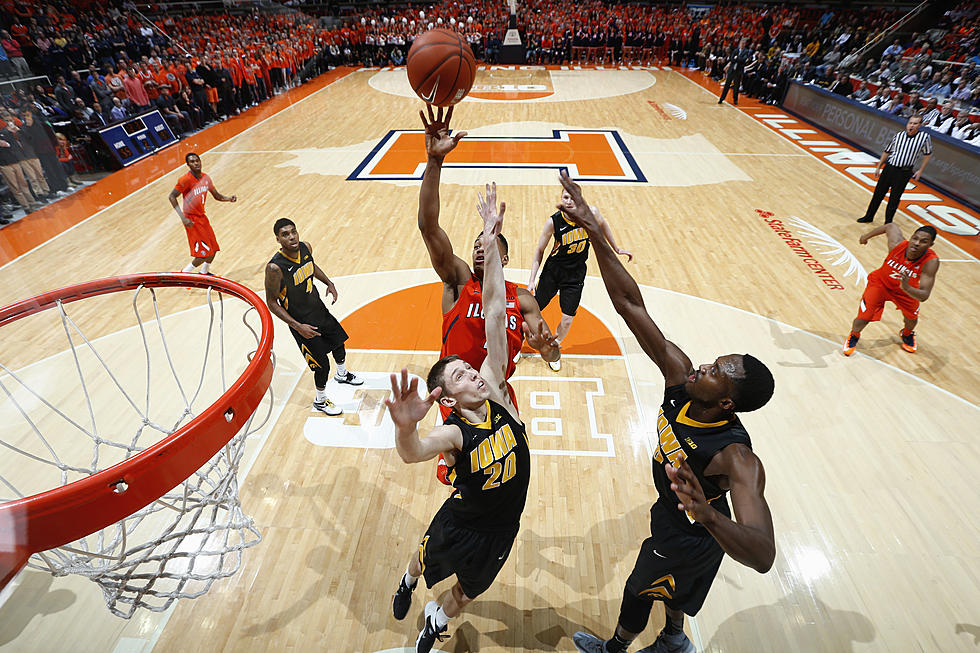
Blur 101: How One Band Continues Winning the Battle of Britpop
Last week, Blur shocked fans by announcing they will release their first album in the 12 years that have lapsed since 2003’s Think Tank. The Britpop leaders will drop The Magic Whip – which will mark their eighth album -- on April 27, and as we eagerly await something that frontman Damon Albarn once told fans not to expect anytime soon (or maybe ever), it’s worth taking a step back and recalling just how Blur got here.
Although Blur – Albarn, guitarist Graham Coxon, bassist Alex James and drummer Dave Rowntree – came together in London, the timing of their inception directly followed in the wake of an emerging alt-rock scene in Manchester. Specifically, the rise of bands like the Stone Roses helped pave the way for Blur, setting the quartet up for their 1991 debut, Leisure.
The album juggled the Stone Roses-sized shoes Blur were tasked with filling, along with the band's predilection for shoegaze heard on the LP’s lead single and track, “She’s So High.” However, the record didn’t live up to the group’s expectations – neither critically nor commercially. Struggling with sizable debt as a result, the band traveled to the U.S. for a tour right at the height of Nirvana’s Nevermind and the growing grunge scene – something both Albarn and Coxon expressly rejected.
In response to their distaste for grunge – as well as Albarn’s self-confessed homesickness – the band regrouped with a collection of distinctly English-sounding songs. They tested the waters of their new sound by releasing the non-album single, “Popscene,” before unveiling their sophomore follow-up, Modern Life Is Rubbish, in 1993.
With the goal of championing all things British pop in tow, Modern Life Is Rubbish carried evident influences from the Kinks, the Who, XTC and more. In fact, Blur even enlisted XTC’s Andy Partidge to produce the album, however, things quickly fell apart and Stephen Street – who also worked on Leisure – returned behind the boards.
Musically, the band embraced definitive British pop sounds, Albarn’s lyrics started taking a critical look at middle-class life, something that would become requisite in Blur’s next two albums. While Modern Life Is Rubbish set the scene for a wave of Britpop outfits to come, it wasn’t until the band’s breakthrough third album -- 1994’s Parklife -- when the foursome started to finally receive the wide acclaim they had been seeking.
Parklife – which debuted at No. 1 on the U.K. charts with the help of singles like the disco-tinged “Girls & Boys” – helped solidify Blur’s spot at the top of the Britpop heap, even opening the doors for other bands to follow, including Pulp, Elastica and Oasis. It was the latter, though, with whom Blur would develop a rivalry during the lead up to their fourth album, 1995’s The Great Escape.
Albarn purposefully moved the release of the album’s lead single, “Country House,” up a week to put it in direct competition with Oasis’ own single, “Roll With It,” which appeared on their 1995 sophomore effort, (What’s the Story) Morning Glory?. Albarn’s calculated move sparked a media frenzy, pitting the two bands against one another. Headlines even deemed the rivalry as the “Battle of Britpop.” Albarn’s strategy worked in the short term – “Country House” beat out the brothers Gallagher’s “Roll With It,” and locked in the No. 1 spot on the U.K. charts. However, in the long run, Morning Glory outperformed Blur’s fourth album.
During the heightened success of Parklife, tensions between Coxon and the rest of Blur would build, largely due to drinking problems and his discomfort with the band’s newfound fame (the guitarist almost left the band for the first time during the making of The Great Escape). At the same time, Coxon also developed an infatuation with American indie rock hailed by Pavement and Sonic Youth. Despite the fact that both Coxon and Albarn had previously dismissed the American music scene, the Blur singer eventually also embraced the sound, which would play a key role in the making of the band’s fifth self-titled album.
Bruised by the relatively poor reception of The Great Escape, Blur went to Iceland to record their follow-up, completely isolating themselves from the British scene that had once driven their albums. As a result, Blur -- which arrived in 1997 -- helped reinvent the band with their newly adopted American influences. While many English critics interpreted the move as a slap in the face, the LP – especially breakout single, “Song 2,” and its addictive, sardonic “whoo-hoos” -- helped the band finally develop a fan base in the States.
Coxon’s continued struggles with his bandmates and Albarn’s breakup with Elastica frontwoman Justine Frischmann would set the band up for the release of their next album, 1999’s 13. The album -- which was also Blur’s first without Stephen Street as producer – explored darker, more confessional territory, which is heard on the emotional lead single, “Tender,” and the Coxon-led “Coffee and TV.”
Around that time, Albarn began work with his with his electronic, virtual band, Gorillaz, who dropped their self-titled debut in 2001. Consequently, Blur’s next album, 2003’s Think Tank, incorporated the same hip-hop and African influences espoused by Albarn's latest project.
However, tensions between Coxon and the rest of Blur were at an all-time high, and the guitarist parted ways with the band early on during Think Tank’s recording, only appearing on one track, “Battery in Your Leg.” Following the arrival of Think Tank, Albarn, James and Rowntree also went their separate ways. During their hiatus, Albarn put out another Gorillaz album, while Coxon released a handful of solo LPs.
After six years apart, Blur’s original lineup reunited for a concert at Hyde Park in London in 2009. In 2010, the band released a documentary, No Distance Left to Run – sharing its title with the 13 song of the same name – along with a brand-new single, “Fool’s Day,” which was released in conjunction with Record Store Day that year.
Now, more than a decade since Think Tank, Blur are promising a new LP with their proper lineup back in business. While many might be keen to dismiss The Magic Whip as another in an ongoing bout of ‘90s nostalgia-driven reunions, “Go Out” – with Coxon’s noisy guitars, Albarn’s almost jaded-sounding, “He’s going to the lo-o-ocal” and Stephen Street back as producer -- proves Blur have anything but lost their edge during their time away.
And we, for one, welcome them back with open arms.
Worst to First: Every Blur Album Ranked
More From 94.1 KRNA



![Man Shoots Selfie Video While Being Extracted From Wrecked Car [Video]](http://townsquare.media/site/43/files/2015/02/RS4860_86264985-scr.jpg?w=980&q=75)
![Police Dashcam Catches the Moment a New Jersey Home Explodes [Video]](http://townsquare.media/site/43/files/2015/02/RS5070_911178274637-scr.jpg?w=980&q=75)





